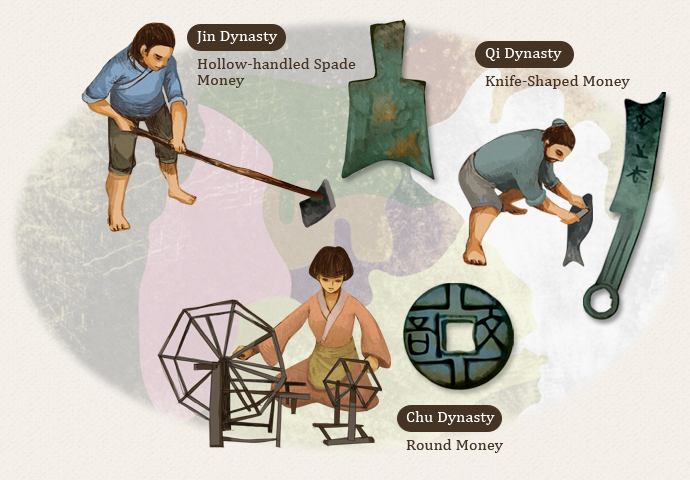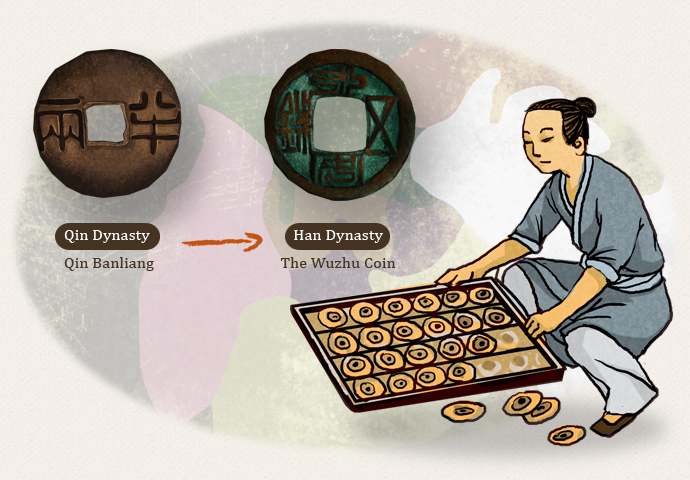Early metal coins did not have a uniform appearance, so they had to be checked for purity and weight. As human civilization developed, more advanced monetary systems were put in place.
Ancient China already had copper currencies of various shapes and forms during the Spring and Autumn and Warring States Periods. Apart from the Yi Bi Qian (“Ant Nose Money”, made of cowrie shells), most currencies at that time were shaped like and named after tools: for example, hollow-handled spade money (modeled on agriculture tools), knife-shaped money (fishing and hunting tools), and “round money” (spinning wheels or jade discs). All these currencies circulated regionally.

Between the Qin Dynasty (221-206 BCE) and the early years of Emperor Wu of Han’s reign (140-87 BCE), currency in China went through a period of standardization. When the First Emperor of Qin Dynasty defeated the other six warring states and unifed China, he also introduced a uniform currency called Qin Banliang—a round copper coin with a square hole in the center. This coin would serve as the prototype currency for future dynasties.
In the fifth year of Emperor Wu of Han’s reign (118 BCE), the Qin Banliang was replaced by the Wuzhu coin, which was more readily circulated. The Wuzhu coin weighed about 3.5 grams; its weight and composition were regulated by the central government and minted by commanderies. Private minting was strictly forbidden. The advent of standardized currencies consolidated the central government’s exclusive right to issue currency; it also heralded the end of the era of currency by weight.

The Kaiyuan Tongbao, issued in the fourth year of Tang Emperor Gaozu (621 CE) was a milestone in the history of Chinese currency development. The emergence of Kaiyuan Tongbao brought an end to the practice of naming a currency by its weight or value. Instead, more abstract names referring to emperors’ reigns were used and, henceforth, currencies were named tongbao, yuanbao, zhongbao, etc. The weight of each unit of the currencies was fixed at one qian, or mace. Units of currencies were also becoming more systematic and comprehensive.

Gold and silver were precious metal currencies used in both China and the West. The Jin Dynasty’s Cheng-an Baohuo was a pioneering standardized silver currency. The booming maritime trade during the Ming Dynasty (1368-1644 CE) brought a large amount of silver into China, and it gradually came to replace copper in coins. During the reign of Qing Emperor Xianfeng (1850-1861 CE), officials such as Lin Zexu suggested that the government mint silver dollars. Later, in the fifteenth year of Qing Emperor Guangxu’s reign (1889 CE), the government introduced minting machines from the UK to Guangzhou. This marked the beginning of the large-scale minting of silver coins in China. In 1933, China’s Nationalist government replaced the silver tael with the yuan in the new silver standard, and the history of the silver tael officially came to an end.
